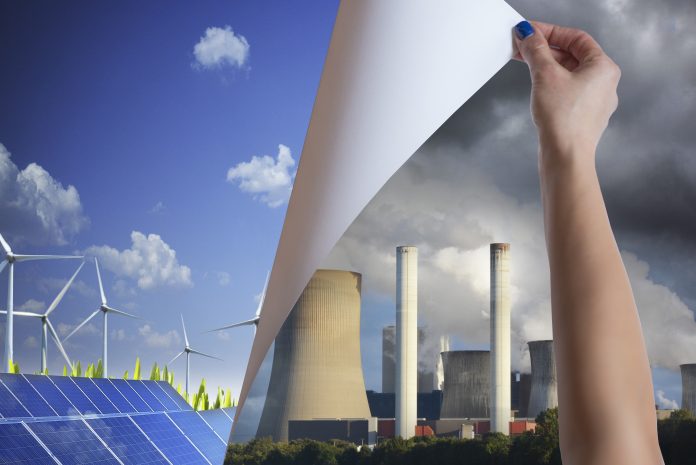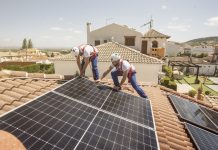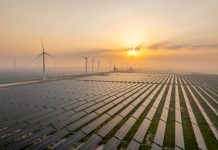Malcolm Brinded CBE FREng, Fellow of the Royal Academy of Engineering, Chair of EngineeringUK and former President of the Energy Institute, Renewable energy asks if renewable energy will underpin Asian emerging economies’ growth
Today, the world faces two key energy challenges: to fulfil rising energy demand and at the same time, ensure as much of that demand as possible is met through low-carbon energy sources to avoid further damage to our climate.
The United Nations’ (UN) 7th Sustainable Development Goal, to “ensure access to affordable, reliable, sustainable and modern energy,” states that “energy is central to nearly every major challenge and opportunity the world faces today.”
Renewable energy can help to address these global challenges and both the public and private sectors have made enormous investments into its development. The UN’s 2019 report Global Trends in Renewable Energy Investment found that global renewable power generation capacity as a whole has quadrupled in the past ten years and new renewables power investment now far outstrips new fossil power generation spend.
Renewable energy in Asia
Some of the most significant increases have come from Asia. Currently, Asian countries are hugely dependent on fossil fuels to support their growing populations’ energy demand, but they are working towards reducing that dependency. Renewables will not only reduce fuel imports and help protect the economy from costly imports of coal, oil and gas but will also help countries in the region to address serious social and economic development issues, such as dangerous levels of urban pollution and unconnected rural communities.
These benefits will need significant technological progress to be realised. At the Royal Academy of Engineering, through programmes like the Newton Fund-supported Leaders in Innovation Fellowships (LIF), we aim to build the capacity of engineers and researchers for entrepreneurship and commercialisation of innovations that support the social and economic development of emerging and developing countries.
SDG7 is a crucial steer for the Academy and our LIF alumni. According to the UN’s Global Trends report: “Be it for jobs, security, climate change, food production or increasing incomes, access to energy for all is essential.”
A national priority
This is why populous countries, such as China and India have made renewable energy a national priority, exemplified with China investing more than $88.5 billion – twice that of the United States – in new capacity last year, and with India committing to an ambitious target of reaching 175GW of renewable capacity by 2022.
Indian solar energy expert and LIF alumnus Himmat Singh of Photom Technologies said: “Through public and private sector innovation, the Indian Government’s solar capacity targets are looking increasingly achievable. In 2010 we had just 500 MW of national solar capacity, but by the end of 2018, we had surpassed 30,000 MW.
“This was possible because of technological advancement, which has contributed to the cost of solar electricity generation dropping to just $0.034 KW/h. This is less than conventional energy sources and has encouraged its propagation. For a developing country like India with a population of more than one billion, carbon footprint control is of vital importance for our planet, and solar energy is a very compatible solution.”
Smaller Asian economies are investing just as heavily, as clean, affordable, and sustainable energy in this diverse region is integral to underpinning economic and social growth. Vietnam, Malaysia and Thailand are all among the top non-OECD investors into clean energy, with Indonesia even reporting that it plans to boost its share of renewables from 12 to 23% by 2025.
Dr Phan Anh Tuan, a Vietnamese LIF alumnus who has developed a way to use wind energy to supply rural areas with clean drinking water, said: “The Vietnamese economy is developing quickly. Over the past ten years, on average our GDP has grown by more than 6% annually, which is putting pressure on our power supply. Accelerating industry, rising living standards and day-to-day demand have contributed to our electrical usage increasing by 9.5% per year.
“This will soon lead to critical shortages because while the demand shows no sign of abating, the resources we are using to supply it are finite. Vietnam is now encouraging the development of green energy, and policies have been put in place to enable this.”
Both the economic and ecologically-motivated arguments for research into renewable energy boil down to the same thing: a desire to improve the quality of life of Asian citizens. The World Health Organization (WHO) reported in 2018 that air pollution levels are dangerously high in many parts of Asia and several countries in the region are instigating their own methods of combatting this health risk.
Leo Allen Tayo, Filipino LIF alumnus and CEO of CHRG Electric Vehicle Technologies, says: “Vehicular emissions currently contribute to 80% of the air pollution in Filipino cities, and volatility in global oil pricing significantly impacts the national economy, with the Philippines importing almost half of its domestic oil consumption. The government has, therefore, been making an effort to modernise the transport system and provide cleaner air.
“As such, our domestic electric mobility market is unique; in developed countries, the entry point tends to be through private car ownership, but in our country, only about 1% of electric vehicles are conventional personal cars. The vast majority of our electric vehicles – 85% – are instead part of the public transport network, helping to centrally reduce our dependence on imported fuel and strengthen local, greener energy generation while improving living conditions in Filipino cities.”
The future
The future of renewable energy in Asia is promising. But there remain many challenges: there is a need to scale up rural solar home systems beyond lighting and phone charging to provide the much larger power needs for rural schools, hospitals, businesses, and air-conditioning. More energy is also required for agriculture – to support irrigation, crop drying, food refrigeration and reliable cold-chains. Another example is freight mobility, where electrification is much more challenging than for light vehicles. The combination of governmental encouragement of change and demand-driven on-the-ground innovation, such as that generated by our LIF community of entrepreneurs, will be key to help drive the Asian renewable energy movement to meet these and other major challenges.











